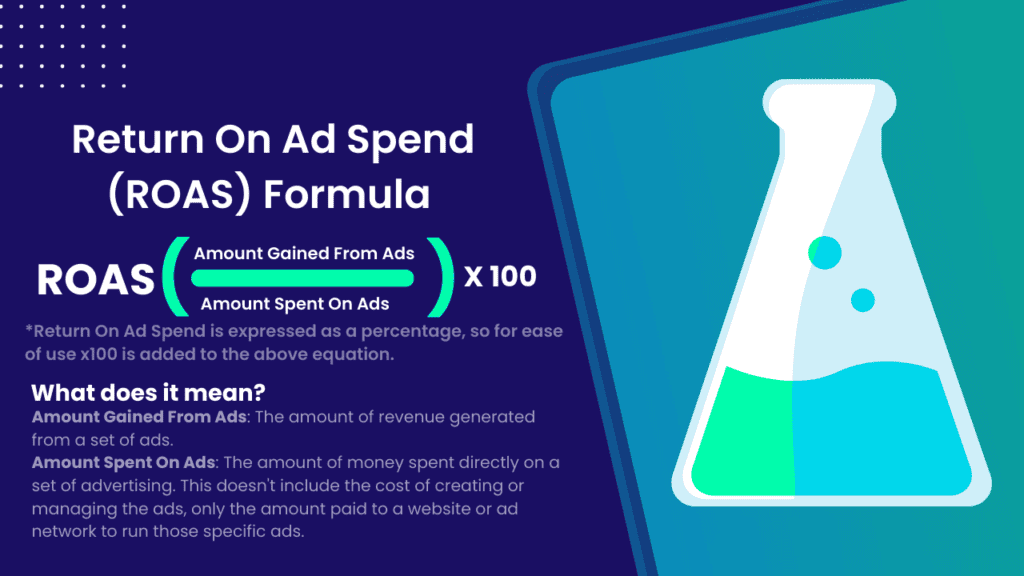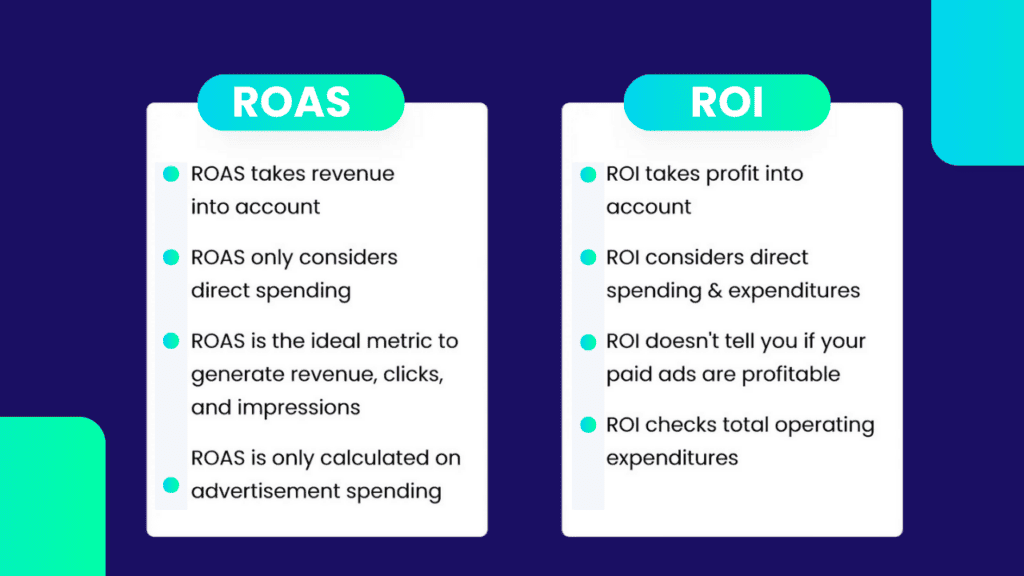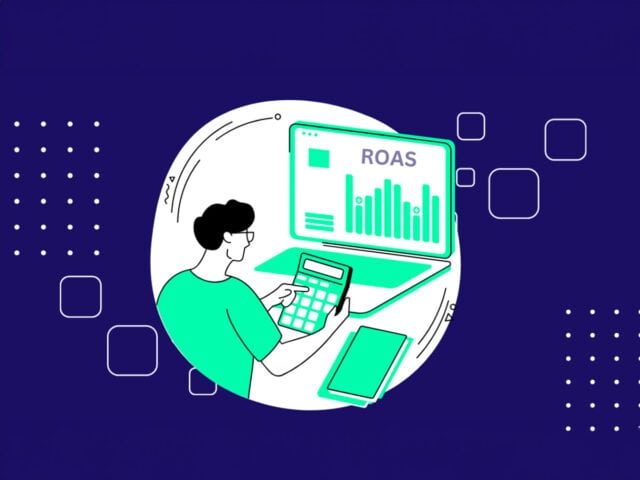What is ROAS?
With marketing budgets and online advertising spend under constant pressure, measuring the basic metrics accurately is vital. Marketers and their teams can use their data for better results and campaign performance. Understanding ROAS and other metrics also helps build a single source of truth about your ad performance.
One of the standard high-value online marketing metrics is the return on Ad Spend Formula (ROAS). ROAS shows the revenue per dollar (or other currency) that you earn. The higher the number, the better your return is. Marketing experts consider a ratio of between $3-$5 per dollar spent as a solid return.
With the worldwide online advertising market due to hit $873 billion in 2024, maximizing return on those investments is a huge deal to the industry. For all marketers ROAS a sign of strong performance and provides a good perception of their ad market. That’s especially as technology changes like cookieless browsing, growth in contextual adverts and other changes impact results.
How to Calculate Return on Ad Spend (ROAS)?
If you have the figures to hand, calculating ROAS is pretty simple. The ROAS formula is your revenue gained from adverts divided by their cost, times 100 (if your are working in cents) So, the short version is revenue/costs(*100).
In practice, say you generate $750 of sales from an advert or campaign that cost $100, then you get a highly effective ROAS score of 7.5.
With complex platforms like Google Ads or Facebook’s ad auctions, choosing different strategies like “lowest cost” can boost your ROAS score by decreasing advert cost, but perhaps reduce revenue over time, so tracking ROAS is key to understanding your performance.

Image: ROAS Calculation
What to consider when calculating ROAS?
ROAS is a very simple metric, you might have multiple costs to factor into your advertising campaign. These can include design and creation costs, management, advertising partner or vendor fees and so on.
And ROAS is only one of the metrics to consider when looking at your campaigns, with ROI and the pay per click costs, including:
- Cost per click (CPC)
- Cost per acquisition (CPA)
- Cost per lead (CPL)
- Advertising Cost of Sale (ACoS)
At which point you will be looking for a marketing or advertising dashboard that does these sums for you, as they get more complex and campaigns build up. Kleene.ai Marketing Spend Optimisation helps you understand your advertising and other data to boost your business.
Using Kleene.ai, adds value by focusing on more than just a few data points, it provides an end-to-end view of your business metrics. And, with enterprise-level, pre-built, advanced analytics for the likes of multi-touch attribution, churn prediction, inventory optimization, and other metrics, it delivers a broad range of value-boosting features.
What Type of Insights Come From ROAS Analysis?
As with everything digital, most marketing teams or operators now use a stack of tools. Marketing applications help monitor multiple campaigns across different services, delivering reports and insights to customers, managers and to better understand their own performance.
A ROAS rating helps in this respect by supporting marketing spend optimization and campaign planning. ROAS highlights the performance of past and current advertising campaigns and their value to your bottom line. And with analytics tools, it can help predict future values.
Using ROAS with data on customer insights and a changing advertising landscape, you can evolve bidding strategies, plan your marketing strategy, identify future budgeting needs and lifetime value. And using modern marketing tools improves the speed of your decision making.
How To Improve Your ROAS Score?
As with any business metric, once you have a ROAS score, the typical aim is to improve it. That might be part of your own job description, a service agreement with a client, or purely to be more efficient with your budget. Below we summarised 8 tactics you can use to improve your ROAS:
- Learn from Competitors’ PPC Campaigns: Analyze your competitors’ PPC strategies using tools like SimilarWeb, Facebook Ad Library, and Semrush. Emulate their successful tactics and ad placements to reach your target audience more effectively.
- Refine Keywords and Bidding: Continuously improve your keywords for better targeting and adjust your bidding strategy. Utilize tools like Ahrefs and Google’s keyword planner to optimize your campaigns for maximum impressions and conversions.
- Target the Right Audience on the Right Platform: Focus your ads on platforms where your target audience is most active. Use demographic-specific advertising to ensure high conversion rates and cost-effective spending.
- Reduce Ad Development Costs: Streamline your ad production to save costs. Opt for simpler, impactful ads over expensive productions. Utilize outsourcing, images, and free resources to create cost-effective yet compelling ads.
- Optimize Ads for Different Devices: Tailor your ads for various devices to ensure proper display and user engagement. Follow platform-specific guidelines for ad sizes and formats.
- Professional and Engaging Landing Pages: Design your landing pages to reflect a professional brand image. Use compelling headlines, clear benefits, and appropriate visuals to convert visitors into customers.
- Create Compelling Content: Focus on creating engaging content with catchy headlines, clear messaging, and credible testimonials. Consider the use of videos if they show a positive return on investment.
- Leverage CRO to Reduce Cart Abandonment: Implement strategies to minimize cart abandonment, such as transparent pricing, streamlined checkout processes, and multiple payment options. Use email follow-ups to re-engage potential customers.
Some of these improvements can be identified over time organically through your own experience. Other insights can be found through competitor analysis, seeing where your rivals advertise. You can also try smart bidding campaigns, like using Google Ads Target Roas, and see how they compare to manual efforts.
Real World Examples of Brands Improving Performance Using ROAS
All this talk is fine, but it takes some real world proof to get most managers to invest in new marketing tools and use modern metrics.
Pharmaceutical firm Atrantil managed to increase its ROAS by 36% by making some simple changes to its processes. Using ROAS, “Atrantil not only found short-term success with their US brand campaign but is also set up for long-term success with all newly optimized paid search accounts and campaigns.”
Another example comes from how marketers helped a Norwegian ecommerce fashion brand retailer boost their ROAS by eight times through a five-step process of data analysis, audience segmentation, creative optimization, channel optimization and continual metric monitoring. The results saw “Over 8x improvement, surpassing their initial goals and industry benchmarks and a significant increase in revenue, directly attributed to optimized marketing campaigns.”
What’s the Difference Between ROAS, ROI and ACOS?
Return on investment (ROI) is a broader metric for understanding your cost base (staff, technology, creative services) and the profit (not just revenue) from your campaigns. There’s no point having a good ROAS score if you have expensive overheads. Calculate ROI by establishing your net income divided by the total cost of investments (x100).

Image: Roas vs ROI table
Advertising Cost of Sale (ACOS) is a calculation used by Amazon that produces the cost of your adverts. Expressed as ACoS = Total Ad Spend divided by Total Sales, ACOS used to be Amazon’s preferred metric to show customers, but has since been replaced by ROAS. Even so, it remains useful to highlight the percentage cost for your profit, so a 20%-25% ACOS is a healthy ratio of $20 or $25 cost per $100 made.
As a rule, measure every metric you can and understand how they relate to each other for the best possible view of your business.
Summary: ROASting the Competition
No matter how small or large your business or campaigns, goals are a key part of improving performance or winning in the marketplace. Using ROAS to create goals, directly improve performance and track results is a major step in advertising process improvement, especially in a market where most rivals are doing the same.



